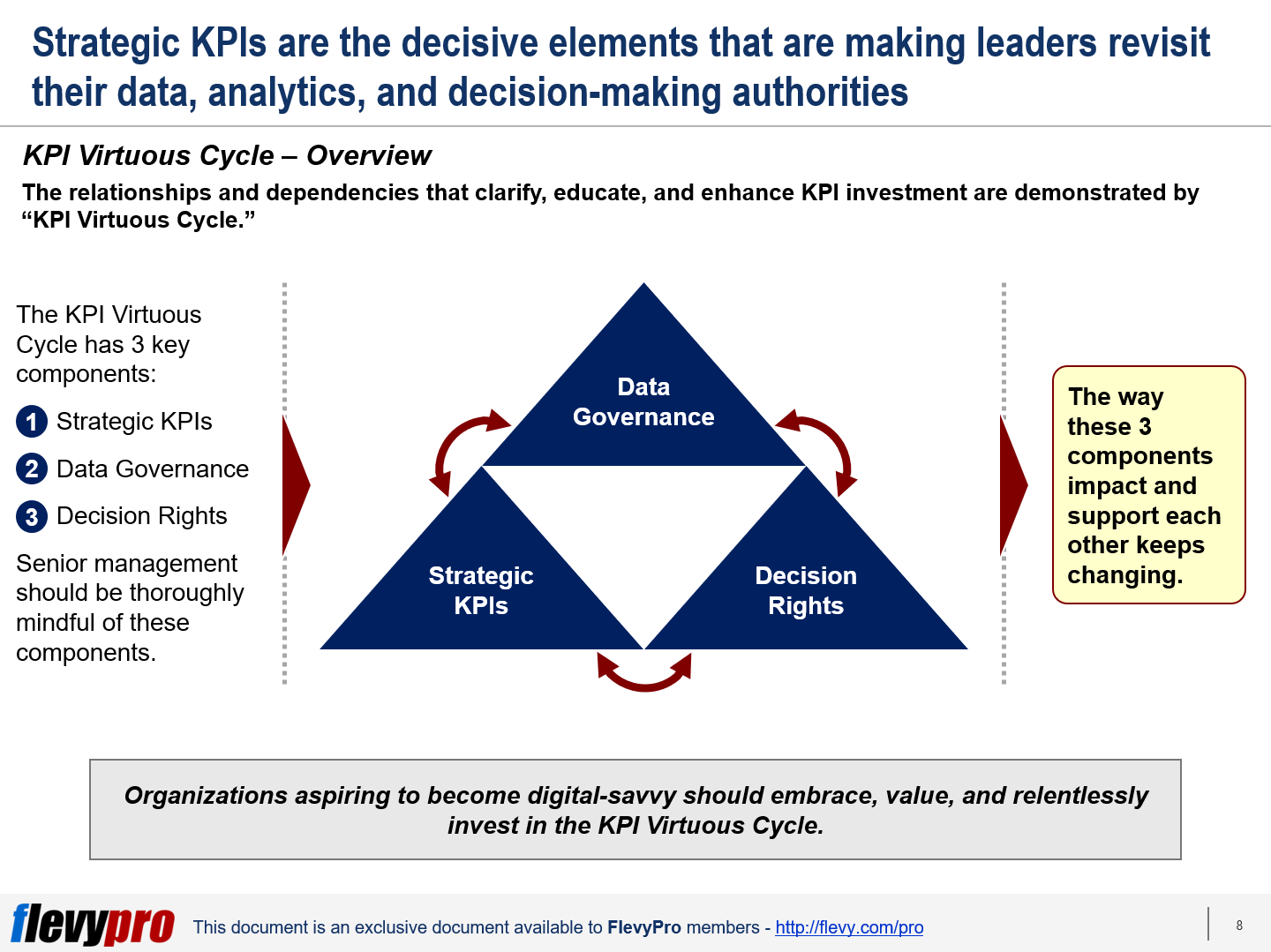Technological innovation and intensifying competition are forcing leaders to rethink how they use Key Performance Indicators (KPIs) to manage and direct organizations. Digitization has reinforced the importance of Key Performance Indicators not only in enhancing employee performance but driving the overall organizational productivity.
The role of KPIs is becoming more dynamic. KPIs are getting demonstrably flexible, smarter, and valuable in achieving strategic advantage. Leading technology-driven organizations—including Amazon, Airbnb, and Uber—rely on metrics considerably and utilize KPIs to steer their strategy and evaluate success. They perceive KPIs quite differently than traditional-focused organizations, and employ them as an input for automation, and to guide, regulate, and improve their machine learning tools.
To make the most out of these dynamic and strategic KPIs of this Digital Age, leaders need to be more insightful and knowledgeable. They should be able to thoroughly determine which KPIs to analyze, how to measure them, and how to effectively improve them. Understanding the value of selected KPIs and their optimization is key to aligning strategies; making the right decision to invest in data, analytics, and automation capabilities; and create a link between people and machines.
KPI Virtuous Cycle
The relationships and dependencies that clarify, educate, and enhance KPI investment are demonstrated by “KPI Virtuous Cycle.” By digitally linking KPIs, data, and decision-making into virtuous cycles, companies can align their immediate situational requirements with long-term strategic planning. The KPI Virtuous Cycle has 3 key components, and it demands active cross-functional collaboration:
- Data Governance
- KPIs
- Decision Rights
The way these 3 components impact—and support each other—keeps changing. Organizations aspiring to become digital-savvy should embrace, value, and relentlessly invest in the KPI Virtuous Cycle.
Data Governance
The first component of the KPI Virtuous Cycle is about employing authority and control (planning, monitoring, and enforcement) through a set of practices and processes to manage organizational data assets. Leading digital organizations consider data as a strategic resource, a valuable tool for measurement and accountability, and a mechanism to facilitate meeting strategic KPIs. Data Governance frameworks are guided by strategic KPIs. Organizations should know what data sets would be ideal to predict and rank—for instance, customers’ lifetime value and their propensity to leave—to prioritize preemptive and preventive action. Data and Analytics serve as a component of Data Governance.
Strategic KPIs
Strategic KPIs shape and govern enterprise Data Governance models. These KPIs include financial, customer, supplier, channel, and partner performance parameters. For instance, Data Governance initiatives in customer-centric organizations are prioritized to facilitate in realizing customer-focused KPIs—e.g., Net Promoter Score (NPS) and Customer Lifetime Value (CLV). Enterprise Data Governance frameworks are strongly influenced and informed by strategic KPIs.
Decision Rights
Decision Rights ascertain the decision-making authority required to drive the business and strategic alignment. Making decisions in such a way that it boosts organizational performance involves identifying the individuals explicitly involved in making decisions, charting an outline on how decisions will be made, reinforcing with appropriate processes and tools, and defining various decision rights scenarios to facilitate in automation. It is, however, quite tricky to determine and assign decision rights when an enterprise is aspiring to empower its people and making machines function better.
Imperatives for Creating Dynamic and Strategic KPIs
For the KPIs to be strategically defined and become truly dynamic, the leadership needs to provide the required support by getting thorough data sets compiled and meaningful analytics performed. At the same time, there is a need to:
- Decide whether the decision rights needs to be assigned to individuals (rather than machines or vice versa.
- Enhance the capabilities of people and machines.
- Apply decision rights to generate data to identify and gauge productivity.
- Identify the delays and bottlenecks between KPIs, data, and decisions.
- Verify the diligence in the way KPIs, data, and decisions are mapped and monitored.
Interested in learning more about the components of KPI Virtuous Cycle, its applications, and Strategic KPIs? You can download an editable PowerPoint on Strategic Key Performance Indicators (KPIs) here on the Flevy documents marketplace.
Are you a Management Consultant?
You can download this and hundreds of other consulting frameworks and consulting training guides from the FlevyPro library.

Comments